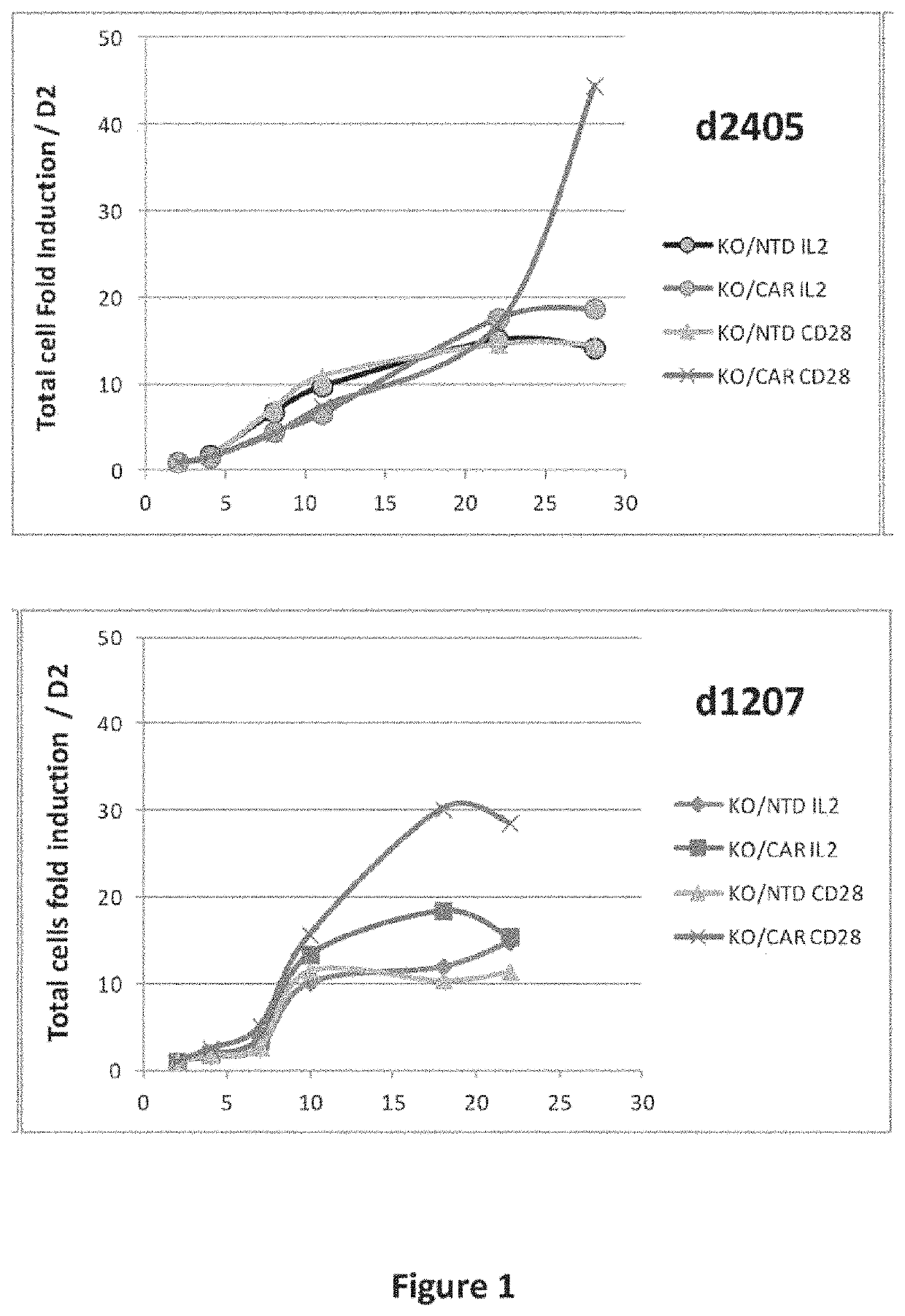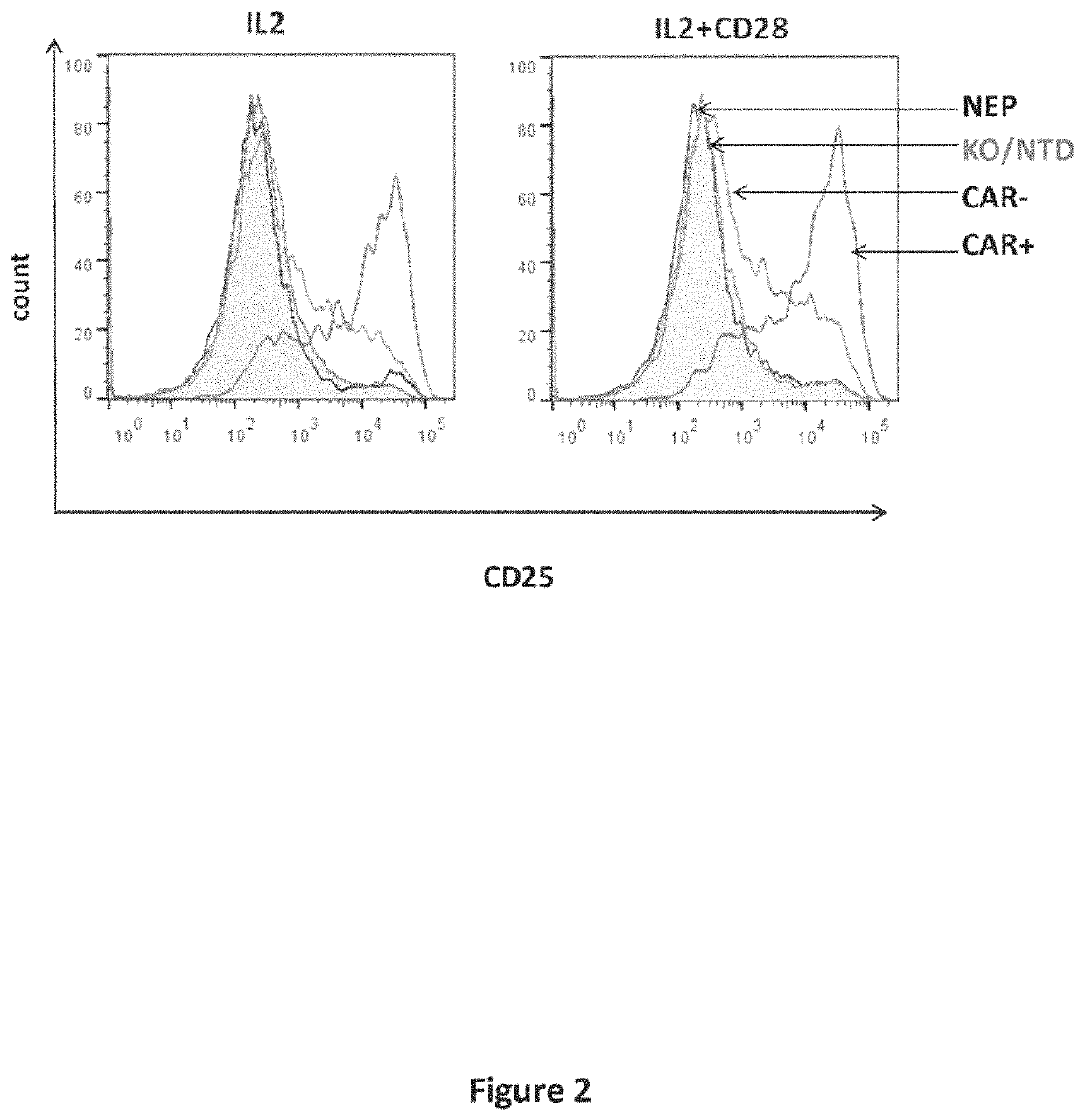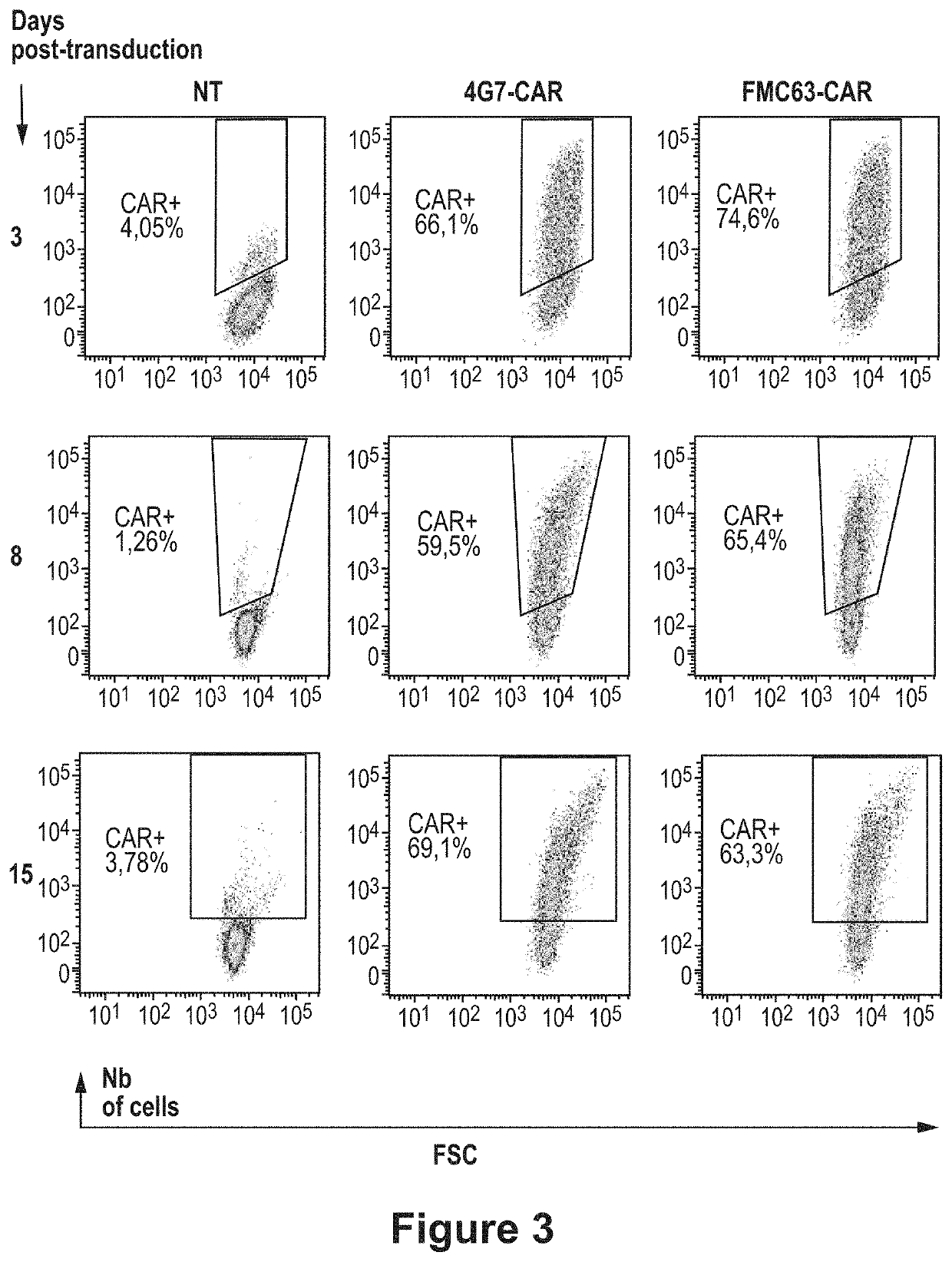CD19 specific chimeric antigen receptor and uses thereof
a chimeric antigen receptor and specific technology, applied in the field of chimeric antigen receptors, can solve the problems of inability to provide prolonged expansion and anti-tumor activity in vivo, and achieve the effect of increasing cell siz
- Summary
- Abstract
- Description
- Claims
- Application Information
AI Technical Summary
Benefits of technology
Problems solved by technology
Method used
Image
Examples
example 1
tion of TCRalpha Inactivated Cells Expressing a 4G7-CAR
[0101]Heterodimeric TALE-nuclease targeting two 17-bp long sequences (called half targets) separated by an 15-bp spacer within T-cell receptor alpha constant chain region (TRAC) gene were designed and produced. Each half target is recognized by repeats of the half TALE-nucleases listed in Table 1.
[0102]
TargetTarget sequenceRepeat sequenceHalf TALE-nucleaseTRAC_T01TTGTCCCACAGATATCCRepeat TRAC_T01-LTRAC_T01-L TALENAgaaccctgaccctg(SEQ ID NO: 21)(SEQ ID NO: 23)CCGTGTACCAGCTGAGARepeat TRAC_T01-RTRAC_T01-R TALEN(SEQ ID NO: 20)(SEQ ID NO: 22)(SEQ ID NO: 24)
[0103]Each TALE-nuclease construct was subcloned using restriction enzyme digestion in a mammalian expression vector under the control of the T7 promoter. mRNA encoding TALE-nuclease cleaving TRAC genomic sequence were synthesized from plasmid carrying the coding sequence downstream from the T7 promoter.
[0104]Purified T cells preactivated during 72 hours with antiCD3 / CD28 coated bead...
example 2
n of Basal Activation of Primary Human T Cells Expressing the 4G7-CAR and the Classical FMC63-CAR
[0107]To determine whether 4G7 scFV confers a prolonged “activated” state on the transduced cell, basal activation of T cell transduced with CAR harboring a 4G7 scFV (SEQ ID NO: 17 encoded SEQ ID NO: 15) or a classical FMC63 scFV (SEQ ID NO: 16) was compared.
[0108]Purified human T cells were transduced according to the following protocol: briefly, 1×106 CD3+ cells preactivated during 3 days with anti CD3 / CD28 coated beads and recombinant IL2 were transduced with lentiviral vectors encoding the 4G7-CAR (SEQ ID NO: 15) and the FMC63-CAR (SEQ ID NO: 16) at an MOI of 5 in 12-well non tissue culture plates coated with 30 μg / ml retronectin. 24 hours post transduction the medium was removed and replaced by fresh medium. The cells were then maintained at a concentration of 1×106 cells / ml throughout the culture period by cell enumeration every 2-3 days.
[0109]3, 8 and 15 days post transduction wit...
example 3
n of Proliferation of Primary Human T Cells Expressing the 4G7-CAR and the Classical FMC63-CAR
[0113]To determine whether 4G7 scFV confers a higher proliferation activity, proliferation of T cell transduced with CAR harboring a 4G7 scFV (SEQ ID NO: 17 encoded SEQ ID NO: 15) or a classical FMC63 scFV (SEQ ID NO: 16) was followed up to 20 days by counting cell two times per week. Purified human T cells were transduced according to the following protocol: briefly, 1×106 CD3+ cells preactivated during 3 days with anti CD3 / CD28 coated beads and recombinant IL2 were transduced with lentiviral vectors encoding the 4G7-CAR (SEQ ID NO: 15) and the FMC63-CAR (SEQ ID NO: 16). The cells were then maintained under classical conditions and were reactivated at Day 12. Cells were seeded at the same density and were counted two times per week during 20 days. As represented in FIG. 6, proliferation activity of T-cells expressing the 4G7-CAR is twofold higher compared to those of cells expressing the c...
PUM
| Property | Measurement | Unit |
|---|---|---|
| temperature | aaaaa | aaaaa |
| nucleic acid | aaaaa | aaaaa |
| flexible | aaaaa | aaaaa |
Abstract
Description
Claims
Application Information
 Login to View More
Login to View More - R&D
- Intellectual Property
- Life Sciences
- Materials
- Tech Scout
- Unparalleled Data Quality
- Higher Quality Content
- 60% Fewer Hallucinations
Browse by: Latest US Patents, China's latest patents, Technical Efficacy Thesaurus, Application Domain, Technology Topic, Popular Technical Reports.
© 2025 PatSnap. All rights reserved.Legal|Privacy policy|Modern Slavery Act Transparency Statement|Sitemap|About US| Contact US: help@patsnap.com



